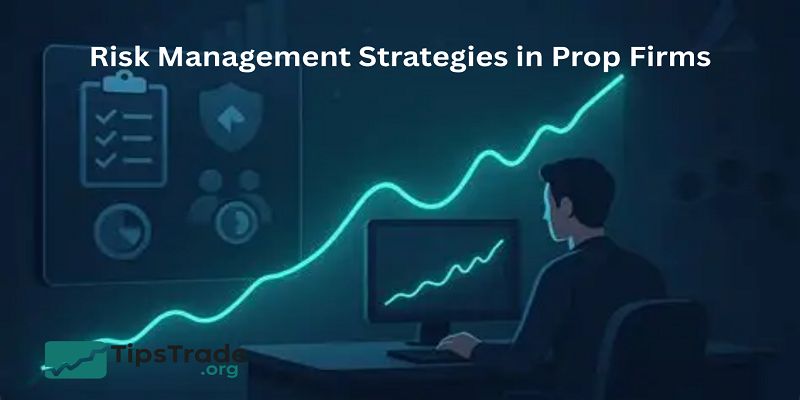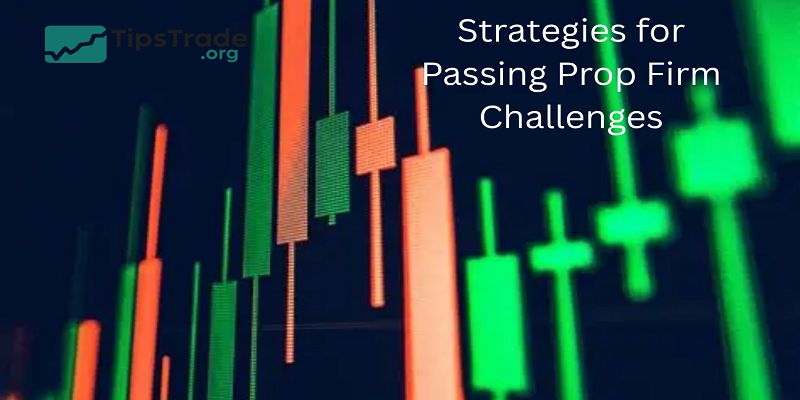Prop Firm strategies are essential techniques that traders use to maximize profits while managing risks when trading with proprietary trading firms. These strategies leverage the firm’s capital and advanced resources, allowing traders to implement disciplined, high-volume trading approaches that might not be possible individually. From trend following to scalping and arbitrage, effective prop firm strategies focus on consistency, risk control, and quick execution to capitalize on market opportunities. Understanding and applying these strategies helps traders enhance their performance, meet the firm’s risk requirements, and increase their share of profits in a competitive trading environment.
Understanding Prop Firms and Their Importance

- Prop firms are companies that provide capital to skilled traders, allowing them to trade financial markets without risking their own money.
- These firms typically allocate significant trading capital, ranging from $25,000 to over $1,000,000, enabling traders to leverage larger positions than they could individually.
- The main benefit for traders is access to this capital coupled with advanced trading infrastructure and support, which increases their potential to earn profits.
- In exchange, prop firms usually take a share of the trader’s profits as compensation.
- To qualify for trading with a prop firm, traders must often pass evaluation challenges or tests designed to measure their consistency, discipline, and risk management skills.
- These evaluations ensure that only skilled traders who can adhere to strict trading rules gain access to firm capital.
- Prop trading allows traders to scale their strategies with reduced personal financial risk, while firms benefit from profit sharing and diversification of income streams.
- This model is growing rapidly due to its ability to combine professional capital management with trader expertise, creating a mutually beneficial environment.
- In summary, prop firms are important because they empower talented traders with capital and resources, enabling larger scale trading and profit potential that might be unattainable otherwise.
- Traders must demonstrate skill and discipline to access these opportunities through evaluation processes.
Why are Prop Firm strategies crucial?
- Because every firm enforces strict rules such as maximum daily drawdown, profit targets, and trading restrictions.
- Without a well-defined plan, even talented traders can fail due to poor risk management or overtrading.
- According to a 2023 report by Finance Magnates, more than 80% of traders fail prop firm evaluations, not because of lack of strategy, but due to psychology and risk mismanagement.
- By mastering structured strategies, traders can align with firm requirements and dramatically improve their chances of passing and keeping funded accounts.
The Role of Strategies in Prop Firm Success

Why Strategies Matter More in Prop Firms than Personal Accounts
-
Strict risk management to avoid hitting drawdown limits.
-
Consistent, controlled trading rather than large, risky bets.
-
Adapting strategies to the firm’s rules, such as limitations on overnight positions or certain trading styles.
-
Emphasizing capital preservation and steady growth to maintain funding.
Prop firms often have evaluation and performance monitoring phases that further enforce discipline and strategic adherence, unlike personal accounts where traders have full autonomy without external constraints
Key Principles for Prop Firm Strategies
- Consistency over luck: Steady profits with controlled risk are rewarded.
- Discipline: Following firm rules is non-negotiable.
- Adaptability: Switching strategies based on market conditions.
- Risk-adjusted returns: Better to make 4% monthly safely than blow up for 20%.
Traders who ignore these principles often fail. Prop firm trading is closer to professional hedge fund discipline than retail gambling.
Popular Prop Firm Strategies
Scalping and Day Trading
- Scalping involves opening and closing trades within minutes, targeting small but frequent profits.
- Many traders choose this for prop firm challenges because it generates fast results.
- However, the risk is high: spreads, slippage, and overtrading can quickly eat into profits.
- A study by My Forex Funds (2022) showed that scalpers had higher pass rates in short-term challenges but lower long-term survival rates.
- If used, scalping must be paired with strict stop-losses and a maximum trade limit per day.
Swing Trading
- Swing trading is more sustainable for prop firms, as it avoids overtrading and allows better risk-reward ratios. By holding trades for several days, swing traders can align with drawdown rules while reducing stress. Many successful prop traders combine swing setups with higher timeframes like H4 or Daily.
Trend Following & Breakouts
- Trend-following strategies align with market momentum. By using moving averages, RSI, or ATR filters, traders can catch strong directional moves.
- This approach works well with prop firms since trends can provide multiple winning trades without forcing daily overtrading.
Mean Reversion & Range Trading
- Some traders thrive by identifying overextended price moves and betting on reversals.
- Tools like Bollinger Bands or RSI divergence can guide entries.
- However, this strategy is risky in trending markets and requires adaptive stop-loss management.
Event-Driven & News Trading
- Trading around news releases (NFP, CPI, FOMC) can generate fast profits but is often restricted by prop firms due to volatility and slippage.
- Traders using this strategy must confirm whether news trading is permitted by the firm’s rules.
Risk Management Strategies in Prop Firms

Position Sizing
- The 1–2% risk per trade rule is non-negotiable in prop trading.
- For example, if a trader has a $100,000 account, risking $1,000–$2,000 per trade ensures they remain within the firm’s drawdown limits.
Daily and Overall Drawdown Rules
- Most firms set a daily drawdown limit of 4–5% and a total limit of 8–10%. A winning strategy means nothing if risk is unmanaged.
- Traders must calculate trade sizes backward from the drawdown rules rather than profit targets.
Stop-Loss and Take-Profit Management
- Placing stop-loss orders is mandatory.
- Many experienced traders recommend a minimum 1:2 risk-reward ratio to maximize account growth while limiting downside risk.
Psychological Risk Control
- Prop trading is 80% psychology. Avoid revenge trading, over-leveraging, or chasing losses.
- Journaling trades helps build accountability. According to Trading Psychology Journal (2023), traders with consistent journaling improved pass rates by 27%.
Strategies for Passing Prop Firm Challenges

Understanding the Challenge Rules
- Each firm has unique rules—some forbid weekend trading, others ban news trading. The first strategy is always to master the rulebook.
- Ignorance leads to automatic disqualification.
Backtesting and Forward-Testing
- Before attempting a challenge, traders should test their strategy on historical data and demo accounts.
- Passing a challenge requires proving a strategy’s robustness under various market conditions.
Structured Trading Plan
- Daily routine: maximum number of trades, risk per trade.
- Profit goals: gradual growth, not aggressive targets.
- Review process: end-of-day analysis.
Avoiding Common Mistakes
- Overtrading due to impatience.
- Risking too much to hit targets quickly.
- Ignoring firm rules like weekend restrictions.
Long-Term Growth with Prop Firms

Long-term growth with prop firms is achievable through disciplined scaling strategies, diversification, continuous learning, and diligent performance review.
Traders funded by prop firms should aim for steady, consistent returns, such as 3–5% monthly, rather than chasing unrealistic high returns like 20%.
Many prop firms reward consistent traders with capital increases, enabling them to grow account size gradually and sustainably.
Diversification is another key to long-term success. By using multiple strategies, such as combining scalping and swing trading, or trading different asset classes like forex and indices, traders spread risk and reduce vulnerability to any single market condition. This approach improves overall portfolio resilience.
Continuous learning plays a vital role in adapting to ever-evolving markets. What was effective in 2022 may no longer work in 2025 due to changing economic data, volatility cycles, and technical patterns. Staying informed through research, economic news, and technical analysis updates helps traders maintain an edge.
Lastly, professional traders keep detailed journals logging every trade, including entry and exit points, risk parameters, and emotional context. Regular performance reviews analyze metrics such as win rate, expectancy, and drawdown to refine strategies and eliminate weaknesses. This practice builds discipline and supports gradual improvement.
-
-
Scale trading capital gradually with realistic monthly return targets.
-
Use multiple strategies and asset classes to diversify and manage risk.
-
Stay updated with market changes and continuously improve skills.
-
Keep a detailed trading journal and review performance regularly.
-
Case Studies of Prop Firm Strategies
Case Study 1: The Disciplined Swing Trader
- A trader with FTMO passed a $100,000 challenge by risking only 0.5% per trade and targeting 2% monthly.
- While it took longer to reach targets, their account stability earned trust and scaling opportunities.
Case Study 2: The Aggressive Scalper
- Another trader passed quickly using news scalping but lost the funded account within 3 weeks due to overexposure.
- This highlights the difference between short-term wins and long-term sustainability.
Lessons Learned
- Conservative strategies ensure survival.
- Aggressive strategies may pass challenges but often fail later.
Comparing Different Prop Firm Strategies
| Strategy | Pros | Cons | Best For |
| Scalping | Fast profits, exciting | High stress, risky, often restricted | Short-term challenges |
| Swing Trading | Sustainable, less stress | Slower growth | Long-term funded accounts |
| Trend Following | Aligns with markets | Can suffer in ranges | Medium-term traders |
| Mean Reversion | Profitable in ranges | Risky in strong trends | Experienced traders |
| News Trading | High impact, fast results | Often restricted, volatile | Advanced risk-takers |
Conclusion
Prop Firm strategies are not just about technical setups—they’re about risk, psychology, and discipline. Traders who approach prop firms like hedge funds, with professionalism and consistency, have the highest chance of long-term success. The article above from Tipstrade.org has just provided you . We hope that you find it useful. Wishing you successful trading!

